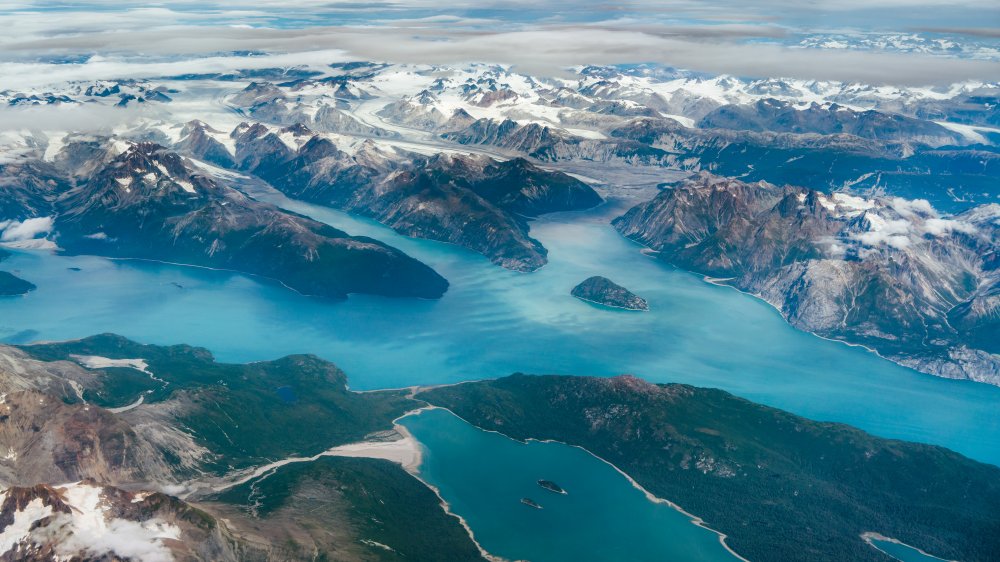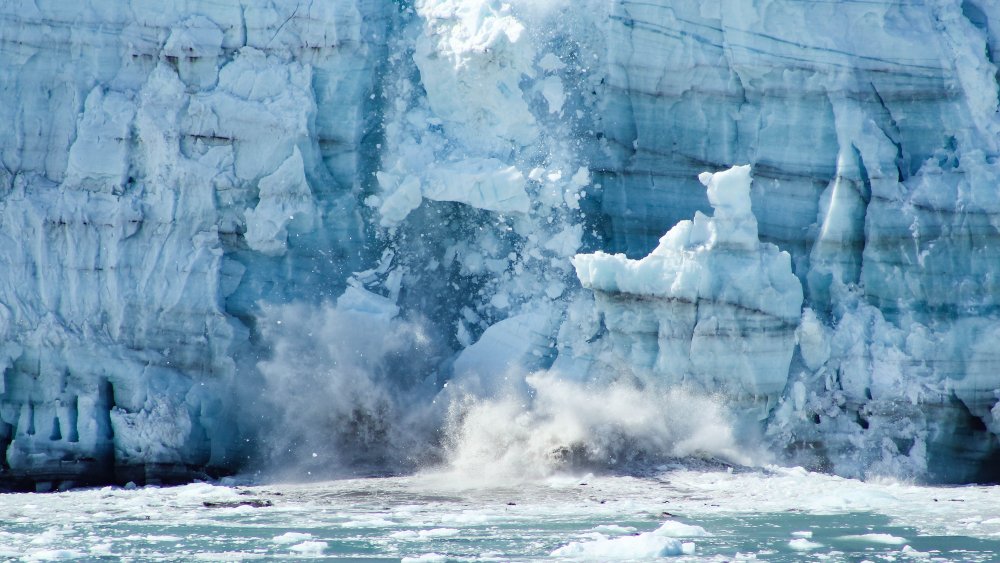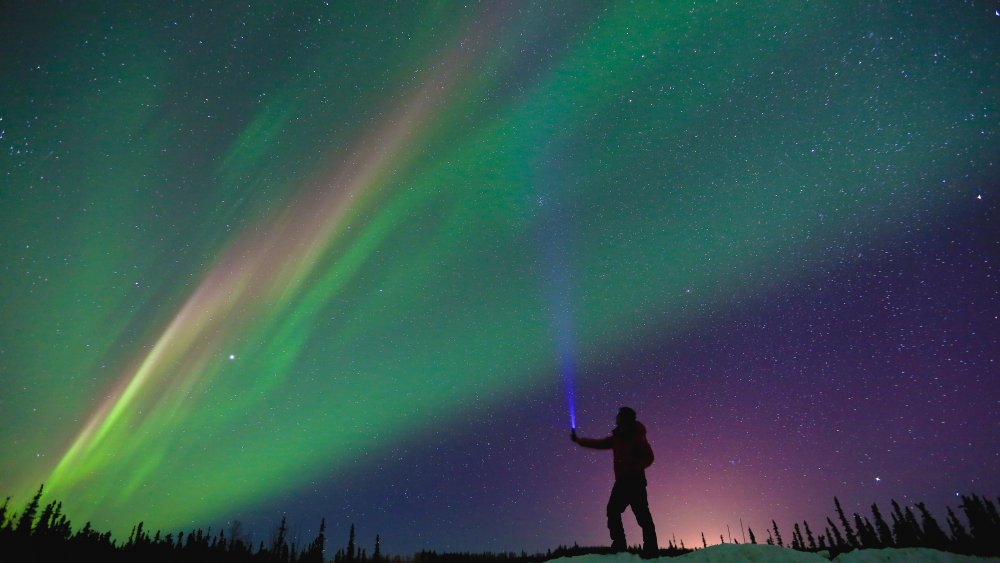The Untold Truth Of Alaska's Bermuda Triangle
People disappear. We are remarkably fragile creatures, after all, and nature can be a mean and sneaky mistress. Just ask Lewis and Clark. All it takes is a predator of unfortunate size, a cliff of inconvenient height, or a deadly yet regrettably delicious mushroom — and poof! A once perfectly alive human transforms into six dollars of nitrogen-rich fertilizer and a mildly soiled pair of used hiking boots.
Which brings us to Alaska — and in particular a massive tract of land between Utkiaqaviq on the state's North coast, Anchorage in the South, and Juneau far to the East near the Canadian border. According to Strange Outdoors, in just over thirty years, a staggering 16,000 people have vanished while traversing this largely unexplored wilderness, dubbed the Alaska Triangle. What's the truth behind Alaska's triagonous terrain of terror? And how can so many people vanish in a world now filled with GPS navigation gadgets, communication devices, and tactical-grade anti-bear flashlights? The kinds of answers you find will depend greatly on where you look.
Here's what we do know
We know that Alaska is large. In 1972, a prominent politician's airplane vanished without a trace somewhere between Anchorage and Juneau, slap bam in the heart of the Alaskan Triangle. Discovery.com reports that the search-and-rescue operation to find the missing plane encompassed 32,000 square miles. To give a sense of scale, that's over three Hawaii's. Scouring an area this vast required a full forty days of searching with an enormous fleet of civilian and military aircraft. The aircraft was never found. Of the many flights lost to this area, the same rule of overwhelmingly impossible scale applies. There's no big mystery here, in this respect. We've been losing tiny things in large things since the inventions of needles and haystacks.
We also know that Alaska is aggressively inhospitable to human life. If mountains, bears, and vast tracts of snow-covered forests weren't enough, Alaska is a frigid, frostbite-happy tapestry of ice fields and glaciers. As the Anchorage Daily News reports, big chunks of ice are remarkably quick to teach humanity an object-lesson in the meaning of frailty. Interviewed by the paper, a pilot described how a glacier crushed his plane: "We heard some crackling in the ice. [...] A piece came down and instantly displaced the river. The plane slid sideways 30 feet, and was crushed up against a stationary block of ice." The plane was scrap metal in less than fifteen seconds. Again, there's little mystery here. Being stranded in a plane-crunching glacial hellscape is going to be tougher than making-do on a tropical island filled with coconuts and lobster ... assuming you weren't on Flight 815.
Here's the befuddling bit
Given the many logical reasons for why people vanish without a trace in this part of the world, is there any actual mystery here? If there is, it really gets back to the absurdly large number of vanished people we're talking about. Strange Outdoors points out in the above-cited article that nearly 3,000 people were reported missing in Alaska in 2007. Referring specifically to the Alaskan Triangle region, close to 250 separate search-and-rescue missions were conducted in the Alaskan Triangle in that year alone. That might seem a bit more plausible for, say, 1987. But two decades on, in an era of GPS and smartphones, that feels like crazy numbers.
If you're willing to indulge in more creepypasta theories, Alaska and its unusual share of disappearances are drenched in fun stories — from flesh-munching Wendigos to marauding UFO incursions. There's also an intriguing assortment of quasi-scientific theories out there. Mysterious Universe, for example, touts the idea that the Alaskan Triangle is home to a convergence of "vile vortices" caused by subterranean electromagnetic currents that can play havoc with navigation tech.
Ouch. Combine glaciers with flesh-eating monsters and wacky magnetics and it's a miracle anyone comes out of the place alive. It's a pity Ed the Disappearer couldn't have sent Jesse to The Bahamas.


